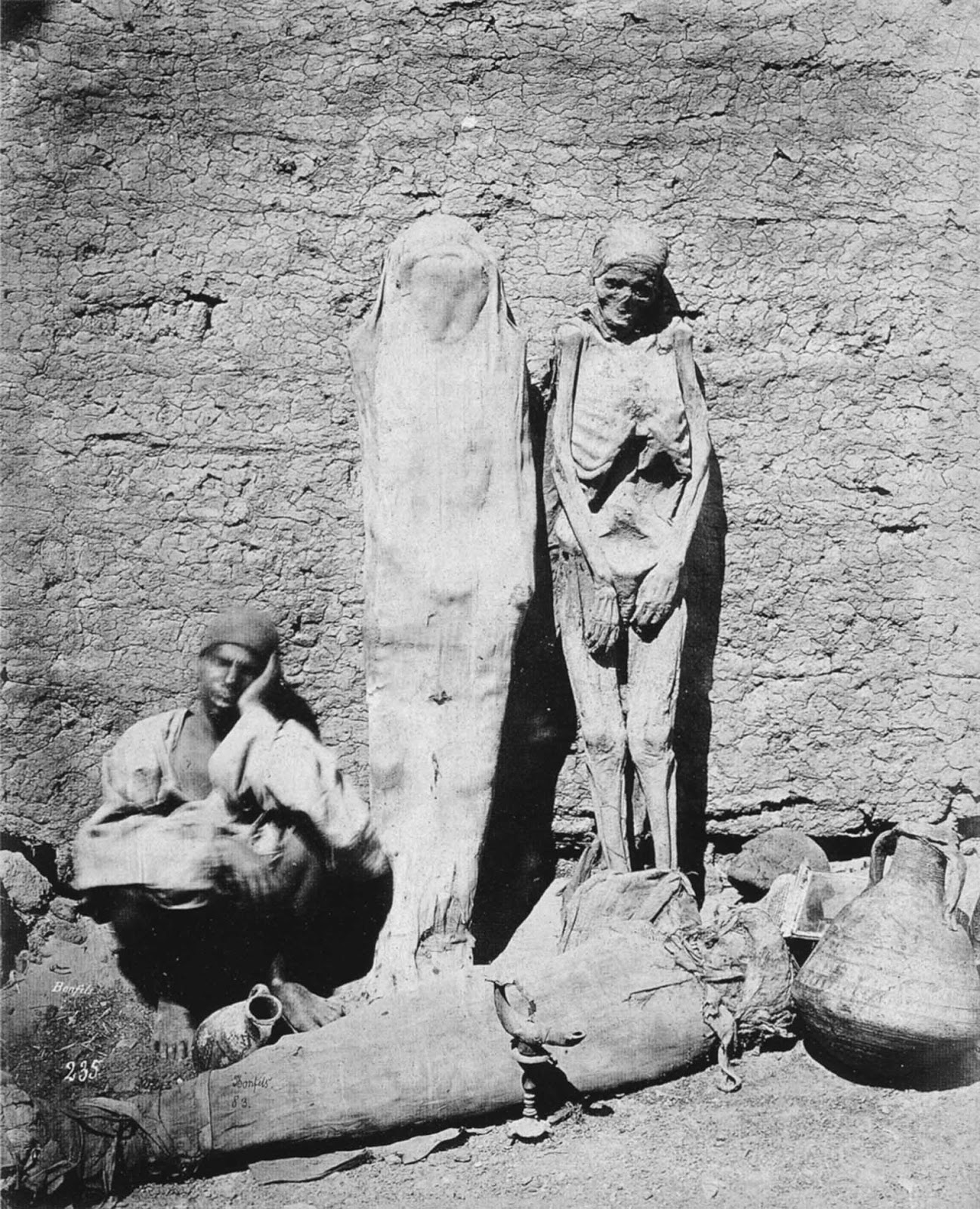Street vendor selling mummies in Egypt, 1865

During the Victorian era of the 1800s, Napoleon's conquest of Egypt opened the doors of Egyptian history to Europeans. At the time, mummies were not given the respect they deserved from the European aristocracy and, in fact, mummies could be bought (as shown in the picture) from street vendors as main events for parties and social gatherings. used as. In the 18th century.
The elite of that era often organized "mummy unwrapping parties", as the name suggests, the main theme of which was to unwrap a mummy at the same time to a boisterous audience, cheering and applause. .
During that time, the well-preserved remains of the ancient Egyptians were regularly ground into powder and consumed as medicinal remedies. In fact, the mummy was so popular that it even provoked a counterfeit trade to meet demand, in which the meat of beggars was passed off as the meat of the ancient mummified Egyptians.
As the Industrial Revolution progressed, Egyptian mummies were exploited for more utilitarian purposes: large numbers of human and animal mummies were ground up and shipped to Britain and Germany for use as fertilizer.
Others were used or wrapped to make mummy brown pigments, which were later exported to the Americas for use in the paper-making industry. Writer Mark Twain also pointed out that mummies were burned as locomotive fuel in Egypt.
As the nineteenth century progressed, mummies became prized objects of display, and many of them were purchased by wealthy European and American private collectors as tourist souvenirs. For those who could not afford the full mummy, scattered remains, such as heads, arms or legs, could be bought on the black market and smuggled back home.
The trade of mummies in Europe was so fast that there were not enough ancient Egyptian bodies to meet the demand even after tombs and cataclysms were torn down.
And so fake mummies were prepared from the corpses of slain criminals, the old, the poor and those who died of terrible diseases, buried in sand or filled with bitumen and exposed to the sun.
Mummy browns were originally made in the 16th and 17th centuries from the ground-up remains of white pitch, myrrh, and Egyptian mummies, both human and feline.
Since it had good transparency, it could be used for glazes, shadows, flesh tones and shading. Artists believed that when bitumen and mummified meat was used in oil paint it would not crack or dry out.
Later in the 20th century, when the supply of available mummies ran out, mummy browns ceased to be produced in their traditional form.
A mummy or mummy is either a substance used in the embalming of mummies or a powder made from ground mummies, which is used as a "medical preparation". Ancient Egyptian mummification often used asphaltum (Persian: mummiya) as an ingredient to fill empty body cavities after organs had been removed.
In the Middle Ages, the resin used on ancient Egyptian mummies was considered to have superior medicinal and chemical value to regular asphalt, and the resulting demand for the ingredient led to the term being applied to the carcasses that were needed to cut it. . So much for the content.

The human race is insane.
ReplyDelete